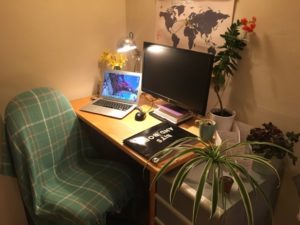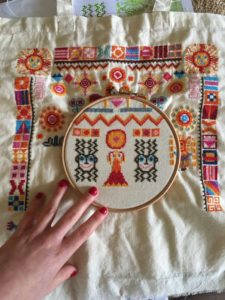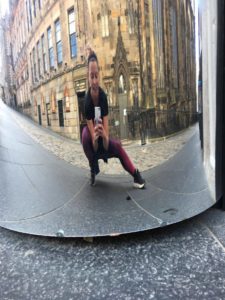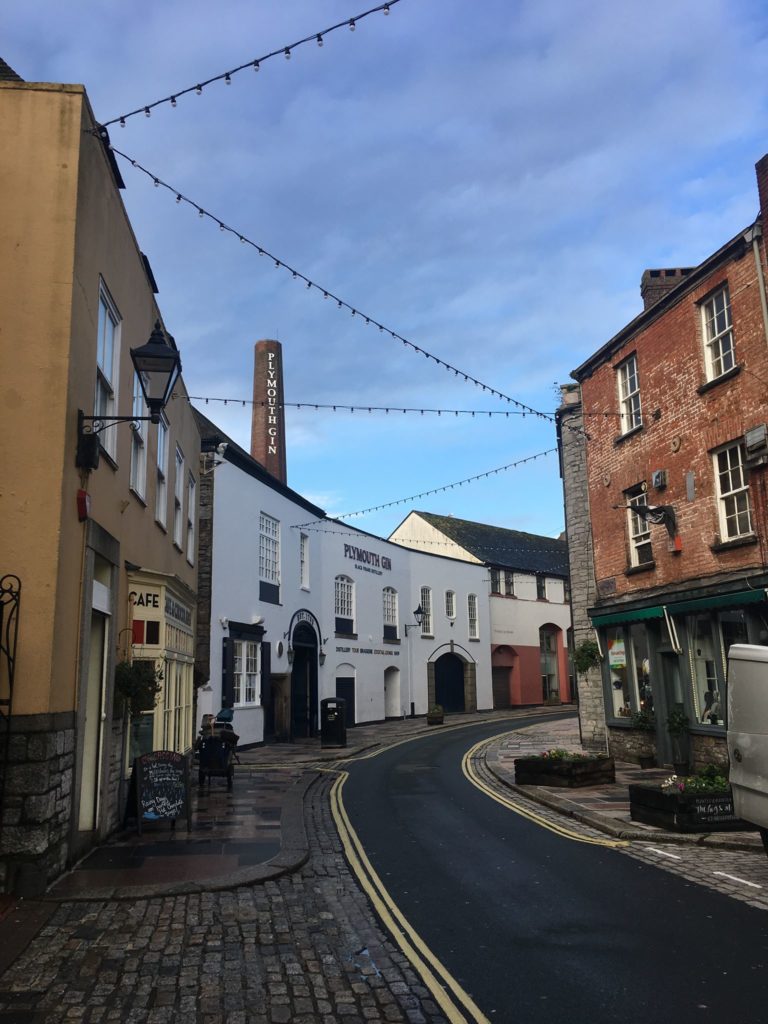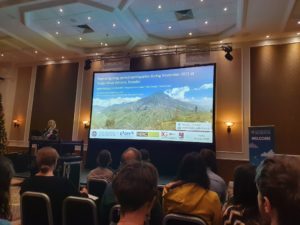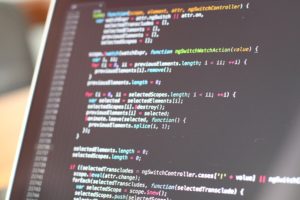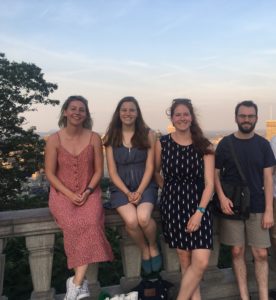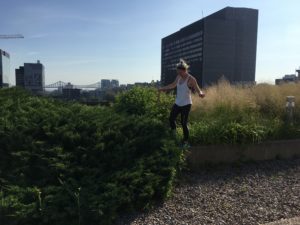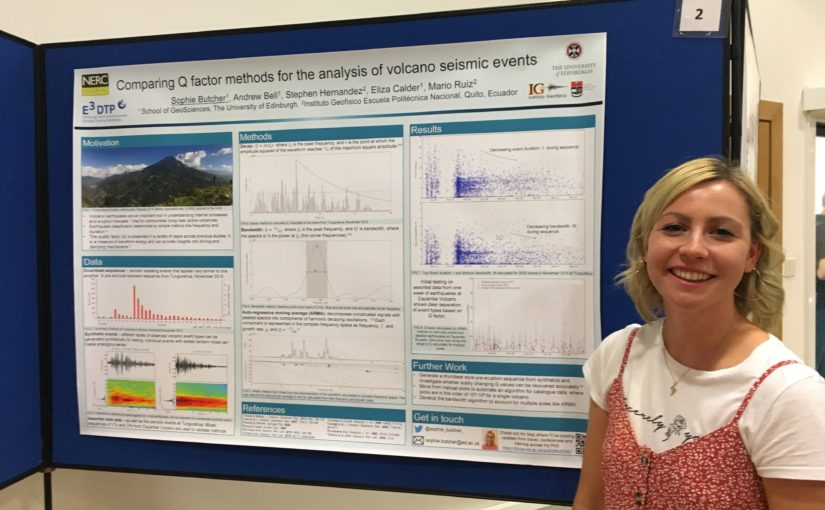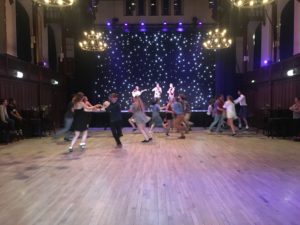The title of this blog is a quote from Personal Theories of Teaching (Fox 1983) 1 and nicely sets the theme for this post. As a PhD student, and a final year MSci student, I have been a tutor and demonstrator across a number of undergraduate geoscience courses. I really love teaching. It’s is a great opportunity to boost your confidence, consolidate a lot of the basic knowledge you learnt yourself as an undergraduate, and pocket some extra money. And having been an undergraduate not that long ago, I know how important good tutors and demonstrators can be in a lab or the field. In September 2019 I enrolled onto a course organised by the Institute for Academic Development (IAD) at the University of Edinburgh, called Introduction to Academic Practice (IntroAP). Aimed at PhD students, postdocs and teaching assistants, the course provides a guided route to Associate Fellowship of Advance HE (HEA). I think I initially enrolled with the mindset that getting a formal accreditation for my teaching would be useful for the CV. But across the semester I learnt an awful lot, and realised this was likely to be more than just a certificate. So I wanted to use this space to share some of my experiences on the course.
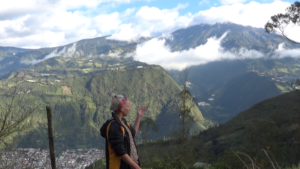
UK Professional Standards Framework (UKPSF) and Peer Reviewed Literature
Any individual can pursue their own application for fellowship, but the alternative route is to take a structured course through your own institution (like IntroAP). Educational research and lots of the surrounding literature was a whole new venture for me and so this structured course was a good option. Your application is centred around how you demonstrate and can reflect upon different elements of the UK Professional Standards Framework (UKPSF) in your own teaching. These fall into three categories – your areas of activity, your core knowledge and your professional values. The activities can include lab demonstrating, marking, leading tutorials, supervising student projects and taking part in CPD. You’re not assessed on your core knowledge (there’s no exam, so don’t stress!). You’ll just need to acknowledge that you have experience in that field, perhaps from your previous degree or training. And finally, the values. You’ll likely recognise all of these values in your teaching without even thinking about it, but the IntroAP seminars introduce these with lots of examples. You can have a read of the full UKPSF document, here.

Exercises
In order to complete the course, you need to fulfil the following:
- Attend 3 seminars during the semester where different elements of the UKPSF are introduced and discussed
- Attend 2 IAD courses for Tutors & Demonstrators (if you have done any of these previously you can check to see if these qualify).
- Complete ‘homework’ tasks, including short (~200 word) contributions to the message boards in the online classroom for the cohort
- Organise a teaching observation exchange
- Submit a draft essay extract ahead of the final essay
- Submit a final essay (~1500 words) via Turnitin addressing all the required elements of the UKPSF and citing relevant peer reviewed literature.
The contributions to the blog were fairly short and I often made this my Sunday afternoon job, but they do require some time to sit and think about them. The final essay I perhaps spent a couple of days putting together. Arguably the hardest part is actually getting it under the word limit. Especially if you’re able to get someone to proof read a draft or discuss your essay with – you’ll realise you probably have endless examples from your own teaching to cite the required elements of the UKPSF. (Thanks to Meredith Corey, for help with this one!)
I hadn’t taken any IAD courses for tutors before starting IntroAP so I had to complete those in addition to the three seminars. The seminars and courses were typically 3hrs on Wednesday afternoons so you need to be prepared to commit at least 5 full Wednesday afternoons during a semester. This is worth bearing in mind when enrolling.
*Disclaimer* As with a lot of things at the moment, I think there are plans to deliver this course in a virtual/hybrid format. Full details for future IntroAP courses can be found on the course website, I just wanted to use this space to document my own experience taking the course in Semester 1 2019/20.
Back in the classroom
So, as well as just recounting tales from your own teaching, your statements need to be supported by some kind of evidence. The seminars in particular were great for introducing some key peer-reviewed literature as well as more informal blogs and magazine publications. This blog opens with a quote from Fox’s Personal Theories of Teaching which investigates the models to describe teaching. These compare for example, whether a teacher is there to simply transfer knowledge to a student, or to guide students through material to encourage their own questioning, or to mould a student to a particular shape. I also particularly enjoyed the series of blogs by Graham Gibbs, 53 Powerful ideas all teachers should know about – many of these articles are very relatable as both a student and a teacher.
Some students adopt a confident or anxious approach to all aspects of their studying. There seem to be students who hope for success and take risks, expect to succeed and are not too worried about the potential consequences. And there are others who are driven by fear of failure, who are conservative in their approach. – Graham Gibbs
Particularly the posts ‘Fear and anxiety are the enemies of learning’2 (quoted) and ‘Lectures are used far too often’3 were useful starting points for discussions around approaches to teaching. With support from the IntroAP tutors, we then discussed how these relate to aspects of the UKPSF. For example, two of the values (V) elements are:
- V1 – Respect individual learners and diverse learning communities
- V2 – Promote participation in higher education and equality of opportunity for learners
Sometimes with the literature or the UKPSF values, I found it very easy to get a bit ‘word-blind’ to unfamiliar terms and struggled to process what they really meant. This is where and the seminars were so helpful in picking apart the values. It is important to distinguish between V1 where we acknowledge the different backgrounds that our students are coming from, what they bring to the classroom and how that diversity of experiences is really important for a good learning environment; and V2 where we actively engage in levelling the playing field and providing the right support for individual students to help them succeed.

In hind-sight, with the COVID-19 pandemic ongoing and lots of universities looking to virtual or hybrid methods of teaching, I’m certainly re-reading the ‘Lectures are used far too often’ blog in a different way. Whilst this piece from Times Higher Education praises the rapid switch to virtual teaching, it also suggests this is unlikely to wholly replace in-person teaching in the long-term4. I’m not 100% sure what the plans are for Semester 1 here, but I delivered a couple of online tutorials at the start of the lockdown in April and I’m looking forward to doing a mixture of in-person and online teaching again later this year.
[Students] don’t like coming to thousand-person lectures very often. But when they do come on campus, the thing our students really [value] is that in-person engagement where you interrogate ideas. So, let’s spend our time doing that. – Professor Brian Schmidt, ANU4
In the search for subject specific material for my final essay submission, I stumbled across a study in the Journal of Geoscience Education where I was even a subject and contributor to the data!5 Having taught Python computing labs in various formats over the last 4 years, it was nice to reflect on some of these experiences and how people have worked really hard to make teaching computer programming as accessible (and enjoyable!) as possible.
Specifics
If you are a University of Edinburgh student or member of staff thinking of taking this course then all the course information is on the IAD website. The course spans one semester and the certificate is awarded at the start of the next semester. There are some formal eligibility requirements for the course, but one of the main ones is teaching experience. Lots of activities in the seminars and the final essay submission require you to reflect on previous teaching experiences. So I’d definitely recommend doing this after at least a couple of semesters teaching so you have a variety of examples to call upon. The course also requires you to do a teaching observation exchange. Now when I took this course, one of my office mates was also enrolled, and this made our exchange very easy to organise as we were already friends and in the same office. We were also both in our third and fourth years of our PhDs respectively, and with busy schedules, the logistics suited us. Our exchange was still valuable even though we were in the same school, as I was demonstrating in a Python programming class and my partner was leading a practical lab. However, you might like to broaden your horizons and observe a reading seminar in the School of Divinity or a discussion group in the School of Social and Political Sciences. It’s up to you, but certainly worth thinking about. The course also does require time and commitment, so I’d definitely spend some time reading the handbook on the website before signing up as it’s not something that can be done half heartedly.
All in all, I’m really pleased I took part in this course and would recommend it to any other PhD students who enjoy teaching. This guided approach to introduce educational theory really suited me as I had a busy semester of teaching and PhD and I probably wouldn’t have been so confident seeking out these materials myself. It’s also provided a good starting point should I pursue an application for Fellow of HEA later on in my career.
If anyone has taken a similar course or is currently working through their own individual fellowship application I’d love to hear your thoughts on the process. Did you complete your application before COVID-19 or do you perhaps now have some new experiences with distance-learning to reflect upon? Do you have any tips or recommendations for further reading?
1 Fox, D., 1983. Personal theories of teaching. Studies in higher education, 8(2), pp.151-163.
2, 3 Gibbs, G., 2014. 53 Powerful ideas all teachers should know about, SEDA, url: https://www.seda.ac.uk/53-powerful-ideas
4 Ross, J., 2020. Pandemic ‘confirms face-to-face teaching is here to stay’, Times Higher Education, url: https://www.timeshighereducation.com/news/pandemic-confirms-face-face-teaching-here-stay
5 Jacobs, C.T., Gorman, G.J., Rees, H.E. and Craig, L.E., 2016. Experiences with efficient methodologies for teaching computer programming to geoscientists. Journal of Geoscience Education, 64(3), pp.183-198.
